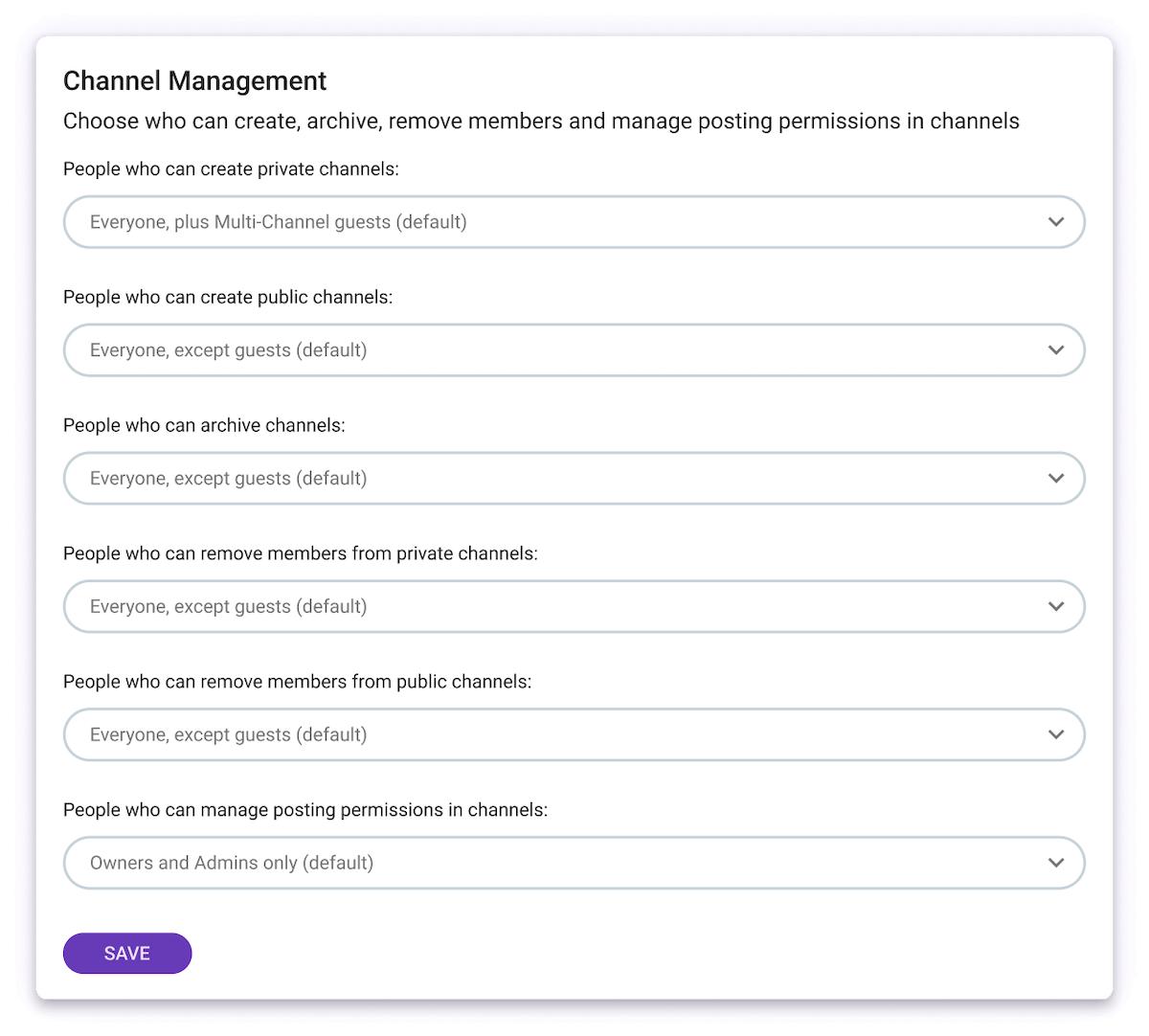The stream of communication at any workplace can flow in two distinct channels — formal and informal. Despite the fancy name, grapevine communication is just a different way of saying informal communication at the workplace — it doesn’t matter whether it’s work-related or not.
The aim of this blog post is to dissect the commonalities between different types of grapevine communication, explain why they occur, what their benefits are, and also how they can negatively affect your business. Once all that is done, we’ll provide you with 6 tips on effectively managing grapevine communication in your team.

Table of Contents
What is grapevine communication?
Grapevine communication is an informal type of social interaction in the workplace, during which formal information may be exchanged unintentionally. This formal information is not necessarily information that should not be made public, but information that you may expect to hear from formal communication channels. In line with it being informal, grapevine communication doesn’t follow a predetermined set of rules — we’re talking chit-chat, instant messaging, phone calls, etc.
To better understand what grapevine communication really looks like, let’s look at the differences between formal and informal communication.
Formal channels include emails, meetings, conference calls, speeches, handouts, etc. What’s common to these formal channels is that they all abide by a set system of rules. You don’t normally compose an email as you would a text message, just as you won’t greet the people at an official meeting as you would your friends on the street or at a bar; let’s not even mention how conference calls and speeches are different from every day phone calls and drunken monologues respectively. Formal communication channels all have their conventions, and you are expected to abide by them. So, the opposite of formal communication is grapevine communication. Despite the fact that grapevine communication is characterized by its lack of formal rules, we can still categorize it into several distinct subtypes.
The four types of grapevine communication
According to the division by Prof. Keith Davis — the leading authority on this topic — grapevine communication comes in four flavors: single strand chain, gossip chain, probability chain, and cluster chain.
1. Single strand chain

Imagine the following scenario: your cubicle neighbor is getting up to make coffee. You know that they need to walk by accounting on their quest to get coffee, so you tell them to pass a message along to the accountant.
That’s how the single strand chain subtype of grapevine communication functions — instead of relying on email or anything even remotely formal, you instead employ an informal currier that’s asked to pass the message from one person to the next.
However, it’s important to note that the information can pass through more than one pair of hands before reaching the final intended recipient. The more people you include in a single strand chain, the more this type of communication begins to look like a game of Chinese whispers — the children’s game where a secret message is whispered through a single strand chain and hilarity ensues when the final recipient says out loud the contents of the message they received. And just like in Chinese whispers, the more players there are, the higher the likelihood of the message getting warped before reaching the final recipient, making it a dangerous game to play at the workplace.
2. Gossip chain

Gossip chains are the easiest to imagine. It’s gossip! We all know how gossip works.
This subtype of grapevine communication is characterized by a single person who relays all the latest info to their co-workers.
It’s important to mention that this information need not be negative. Even though the word gossip doesn’t exactly carry positive connotations, gossip chains are only characterized by their epicentral nature whereby information spreads to everyone from a single direct source, indiscriminately — it has nothing to do with the contents of the information. According to Kurland and Pelled, what separates positive gossip from negative gossip is that it doesn’t imbue the gossiper with coercive power. So go ahead and gossip in a positive way!
3. Probability chain

Probability chains are by far the most difficult to conceptualize, so don’t try to make too much sense from the illustration, as it’s just one of an infinite number of ways to illustrate this subtype of grapevine communication. This is because there’s no method to their madness. Probability chains are governed by the laws of probability alone, making them completely random in nature.
For example, let’s say you ask a co-worker whether they’ve done something interesting during the weekend and they inform you that they — for whatever reason — watched this amazing documentary on beaver dams. This is the kind of irrelevant information that probability chains deal in.
In any case, you receive this info and then you go on about your work, knowing that there is an allegedly amazing beaver dam documentary out there. If the context in which you could share this information arises, you will, but there’s no way to predict this. Likewise, the other people you inform about the documentary may then go on to spread the word further, yet it all functions completely randomly.
Needless to say, probability chains are the rarest form of grapevine communication in the workplace, and the one least likely to concern the employer.
4. Cluster chain

Remember the ALS Ice Bucket Challenge? Even though it’s been many years since this phenomenon took the Internet by storm, chances are you do. The challenge functioned like this:
You film yourself pouring a bucket of ice-cold water on yourself to spread awareness for ALS. You nominate (in most cases) three other people to do the same. The nominated people who rise to the challenge also nominate three people they know, and so on. Mathematically speaking, only 15 iterations of this challenge would be enough to include the entire population of the Earth two times over, as 3 to the power of 15 is over 14 billion.
Of course, these proportions aren’t something you have to worry about within your team, but the basic principle is the same— perhaps the boss will share some information with team leaders and expect them to pass that info on to a select few employees of their choosing. If they really want to hire a new employee for a certain position, HR will likely reach out to employees most likely to know the relevant people and ask them to spread the word. Up to 48% of new hires come from employee referrals.
We may also perceive cluster chains as a different type of gossip, where we don’t have a single person spreading the word to everyone. Instead, people spread the word only to a select few individuals, who then relay the information to their select few, and so on.
How and why do grapevines emerge? The answer lies in human nature
You may have heard of the evolutionary perspective of gossip proposed by psychologist Robin Dunbar. In it, he states that language has evolved so that we can gossip, rather than to aid in coordinating hunts. For us humans, gossip serves a function similar to grooming in other primates — it helps us build and analyze relationships and forge alliances. As Yuval Noah Harari, the famous historian who wrote “Sapiens: A Brief History of Humankind” put it, knowing who’s honest, who’s a cheat, and who hates whom is much more important to humanity’s survival and reproduction than knowing where lions and bison are.
All of this is to say that gossip, and by extension grapevine communication, is something so inherent to human nature that civilization would not exist without it. From this perspective, it would be weirder if employees didn’t turn to grapevine communication, in any of its forms. The statistics reaffirm this by showing that 70% of all workplace communication occurs through the grapevine. On the whole, we like to gossip (gossip chain), we like to share information we find interesting (probability chain), and, if asking one person to relay a piece of information can prevent the need to compose an email, we like that as well (single strand chain). We’re also inclined to believe information from the grapevine, as statistics show that over 70% of office gossip is true.
That being said, there are several prominent reasons for the emergence of grapevines in a company as a direct consequence of something bad that can be fixed. The four most prominent reasons are negative emotions, lack of transparency, mistrust, and hard times.
Grapevine communication emerges because of negative emotions
People need to vent from time to time. This is normal. And in cases where the subject of said venting isn’t job-related, and it doesn’t impact productivity, you can let it be.
However, it’s often the case that employees need to blow off some steam precisely because of negative emotions that arise in the workplace.
For example, this could be a superior taking credit for their subordinate’s work or refusing to give feedback all while repeatedly reprimanding the employee for a job that’s not bad, but not quite to their liking. This is a situation that’s 100% preventable, yet it’s so ubiquitous that everyone reading this has likely either been in that situation or knows someone who’s gone through it.
Grapevine communication emerges because of a lack of transparency
Genuine curiosity also plays a role in the emergence of grapevines. The livelihoods of employees rest on the shoulders of big company decisions. Even if employees don’t get a say in making these decisions, they want to be in the know. Should managers, team leaders, or employers fail to provide this info, employees will seek it elsewhere.
Grapevine communication emerges because of mistrust
If the mood among your employees is characterized by a lack of trust, employees will seek to procure most of the information relevant to them via the grapevine. After all, they don’t trust team leaders/managers/employers, and by extension don’t trust in the veracity of the info they provide.
Grapevine communication emerges because of hard times
Despite likely not having access to the company’s bank account balance, employees can usually tell how a business is doing; call it a sixth sense. If the business isn’t doing well, bad things tend to follow. For employees, this includes possible termination. Trepidation of this event or similar undesired occurrences will inevitably lead employees to discussion, which is guaranteed to occur via the grapevine.
The advantages and disadvantages of grapevine communication
Because it often stems from human nature, and every attempt to eradicate it has been and will continue to be doomed to fail, the best thing to do if you’re searching for ways to manage grapevine communication in your team is to understand its benefits and detriments.
The disadvantages of grapevine communication
“Know thy enemy and know thyself; in a hundred battles you will never be defeated.” That’s the full version of the famous quote of Sun Tsu in “The Art of War”. While less bloody than waging a war, making your way around graševine communication at the workplace can be just as brutal. The good news is, we can easily list everything you need to know about thy enemy — i.e. the disadvantages of grapevine communication.
Breach of confidentiality
Because grapevine communication is basically everyday communication, it’s often improvised. This improvised nature also makes it very dangerous, as once information enters the grapevine, you effectively no longer have ownership of it. All you can do is attempt some damage control.
Once we start rambling without a filter — and why would we filter our words, we’re just having a casual conversation about beaver dams when… What’s this? Oh no! Client lists, pending terminations, salaries, and employee perks are hijacking the conversation!
Okay, so that’s a bit overdramatic. But it’s not that hard to imagine just one of these pieces of confidential information ad-libbing its way into a casual conversation.
Misinformation spreading
Half-truths are often harder to deal with than pure lies. If leadership has made an important decision but elected not to inform the employees about said decision, and someone leaks this decision to the employees — which is most likely to happen via the grapevine — it will circulate among them faster than venom circulates through the bloodstream.
This is bad in its own right, but it could be worse. It gets worse when an interpretation of the decision gets leaked (which is more likely to happen). In this case, you won’t just have to deal with employees knowing something they shouldn’t, but also perpetuating mistruths that can end up costing you big time.
Productivity drops
Whether welcome or unwelcome, it’s undeniable that for many employees, grapevine communication is a form of interruption. And when you consider that it takes us approximately 23 minutes and 15 seconds to refocus after suffering through a distraction, you don’t need to be a math genius to understand the negative impact this form of communication has on productivity at the workplace.
Dilutes company culture
Every employee has a business goal in mind, a vision of how they want to run their business and which values they wish to uphold. Lack of formal communication channels increases the likelihood of employees remaining ignorant to these goals and values. According to workplace statistics, less than 6% of businesses communicate their daily goals. If you don’t communicate your vision publicly and intelligibly, employees will make their own inferences about it and perpetuate them to others through the grapevine.
Creates a management vs. employees work culture
If unmanaged (or worse yet, ignored) grapevine communication can fester the mentality of employees versus management, by spurring employees to form a group identity solely based on their mistrust of management.
Hard to manage
This last point should be clear as day by now, but let’s introduce it formally just to be on the safe side. Due to its colloquial nature, grapevine communication is incredibly difficult to manage, even at the best of times, when the topic at hand doesn’t deal with confidential information or misinformation. Even if you could get a transcript of every conversation employees have, who would comb through all that data and analyze it?
The advantages of grapevine communication
Much like a snowy environment, grapevine communication is just something you have to accommodate to.
But despite not being everyone’s favorite season, Winter brings a lot of cheer and holidays. By the same token, it can also work in your favor, if you can learn to make use of the advantages of grapevine communication.
Speedy information transfer
Formal channels of communication have nothing on the grapevine when it comes to how quickly they can be used to share information. If a manager has something urgent they need to tell an employee who’s out, they’re not going to sit down and compose an email with the subject Urgent. No, in all likelihood, they’re going to ring the employee up, ensuring the urgent message is received.
Facilitates feedback
When it comes to feedback, formal channels of communication do a fine job of dishing it out. However, gathering feedback, especially honest feedback, is something that the grapevine excels at. As established, many employees turn to the grapevine to vent their frustrations. This isn’t the kind of feedback most of them are likely to give during an official meeting or through a survey. Keeping an eye (or ear) out for grapevine talk can give you a great idea of where the morale of your employees is at and how they feel about their positions, managers, and so on.
Helps build rapport
Let’s imagine the following scenario: You have a team of workers who don’t communicate outside the workplace. Give them enough time, and the team members will build cognitive trust for each other, based on their performances. But affective-based trust is going to remain undeveloped unless nurtured.
What’s scary about this scenario is that this is the situation many WFH employees who have never been in an office setting find themselves in. In this case, you can use the grapevine to great effect to help build rapport and affective trust among the team members.
Provides a solution for the management vs. employees work culture
We’ve already mentioned how management ignoring the grapevine can lead to a wider divide between it and employees — but the opposite is also true. Not only will partaking in grapevine communication help build trust between workers and management, but it will also facilitate problem-solving for any issues that do arise from their minor yet inevitable clashes.
6 tips on dealing with grapevine communication in your team
Under normal circumstances, you would consider the pros and cons of something and then decide whether that something is worth your time or not. If, for example, you weigh the pros and cons of adding a third shift to your business and the cons come out on top, you can simply elect not to introduce it.
But grapevine communication cannot be eradicated. As discussed previously, it is a fact of nature, and nature always finds a way. Ignoring it is not recommended either, as this will inadvertently lead to some of the disadvantages we’ve mentioned. The only thing left is to manage it to the best of your ability.
These six tips have proven capable of effectively managing grapevine communication.
1. Be transparent
We have already mentioned how the lack of transparency is one of the main reasons many employees turn to the grapevine in the first place. Employees want to be in the know about the important decisions being made in the company — layoffs, acquisitions, mergers, hirings, etc. Even if their position at the company renders them unable to influence these decisions in any way, they still want to be informed. After all, their livelihoods are tied to the company, so they will have opinions either way.
Consider the example wherein a CEO in the beverage industry lost his job due to a lack of transparency. By not communicating to his employees that they weren’t going to lose their jobs because the company had sold a bottling plant, they went on strike. The situation was completely preventable, but lack of transparency activated the grapevine, misinformation gave rise to fear, and fear took care of the rest.
By communicating important information to employees directly and consistently, you will eliminate the need for many of them to turn to the grapevine.
But this may not work in all cases. Statistics show that, if senior leadership and the grapevine provide conflicting information, 47% of employees will put their faith in the grapevine. Of the remaining 53%, only 42% would believe senior leadership, with the remaining 11% preferring to piece together a picture using elements from both sources. However, even this problem can be avoided by employing our second tip for grapevine communication management:
2. Identify grapevine contributors
Even though many employees may engage with the grapevine, the fact of the matter is that only 10% of employees serve as active contributors. Identifying these individuals and making sure they have the correct information can greatly reduce the spreading of misinformation.
If the same info is being served in both formal and informal channels, then the statistics regarding the percentage of employees who believe the grapevine over official info becomes irrelevant. In such cases, you need to think of grapevine contributors as assets, rather than nuisances.
3. Minimize distractions

Employees are often spurred to chatter as a consequence of some external action. This could even be you, the team leader, sharing information too frequently. No matter how important the info, every message notification is a distraction. Such distraction not only increases the time needed to accomplish a task but can also bring down its quality.
Balancing the transparent and consistent dissemination of information while making sure not to disturb employees is a tough act to pull off. One suggestion to this problem includes appointing scheduled times for information sharing. This could be a daily or weekly meeting or email, scheduled at the exact same time. This way, employees can organize their efforts around these meetings to maintain productivity.
Conversely, lack of engagement can lead employees with nothing to do but engage in grapevine communication (or twiddle around on their smartphones). In this case, the most productive employee who does their tasks ahead of schedule can become a distraction to everyone around them. “Rewarding” them with more tasks as a job well done is bound to drop their morale and discourage such productivity in the entire team. Instead, consider rewarding them in ways that will motivate the rest of the team to up their productivity — we’re not talking cash.
4. Incorporate feedback
Believe it or not, the grapevine can be an invaluable tool for helping you make the right decisions.
As the beating pulse of the employees, the grapevine can be used as a barometer to measure public opinion within an organization. If you’re not sure how a proposed decision will register with the employees, give it a test run by passing it through the grapevine.
By the same token, you can use the grapevine as an effective indicator of how employees feel about anything — workflow, management, products, decisions, etc. This is info you’re not likely to get through formal means of communication. Listening to it and making adjustments where necessary can bring long-term benefits, not least of which is the increased trust-building between leadership and employees, who will appreciate that their voices are being heard.
5. Match the technology with the task
One of the problems of formal communication channels is that they are annoyingly slow. Take emails, for example. Most people have cluttered inboxes and spam filters that are known to gobble up important emails are the worst times. Moreover, emails function as asynchronous communication tools, meaning that the expectation to read the email and reply to it right away isn’t even expected.
A real-time team communication app, like Pumble, can expedite formal communication. Furthermore, since you can expect grapevine communication to occur through the team chat app your company uses as well, this can help minimize unwanted grapevine communication.
If you’re getting your transparent information from managers, team leaders, and employers through email or scheduled weekly/monthly meetings, that leaves you with plenty of wiggle room to search for potential leaks through the grapevine. Conversely, if you’re already being served transparent information through Pumble, you’re much less likely to use the same team chat app to engage with the grapevine regarding the same topic.
6. Promote team building through the grapevine
In today’s business climate that’s rapidly favoring remote work, you can promote grapevine communication among remote workers to facilitate team building. A team chat app like Pumble provides a highly fertile ground for such exercises. While remote workers (especially ones who have never worked in-person at the company) have a difficult time randomly starting conversations in DMs, they are much more casual about contributing to group chats. On Pumble, employees can make their own private or public channels for various topics. You could have dedicated channels for #movies, #gaming, #memes, and so on.

This way, remote workers could bond over shared hobbies and interests in a manner that feels natural. It may appear completely job-unrelated, but this will foster affective-based trust among team members, which will pay dividends when the time comes for remote employees to work as a team.
There are also various team-building activities you can do on Pumble to foster camaraderie among your remote workers.
Pumble reduces the chances of grapevine communication
When a team has an efficient team chat app at their disposal, it might reduce the chances of grapevine communication.
First of all, it is unlikely one would use features such as direct messages or channels to spread rumors or gossip since everything is transparent and kept on record forever with unlimited message history.
Secondly, not everyone will have permission to post on particular channels, hence the risk of reading something through the grapevine is reduced.

Finally, if one needs to discuss anything in particular, they can schedule a video conference or audio call and communicate the matter directly to colleagues or superiors.




